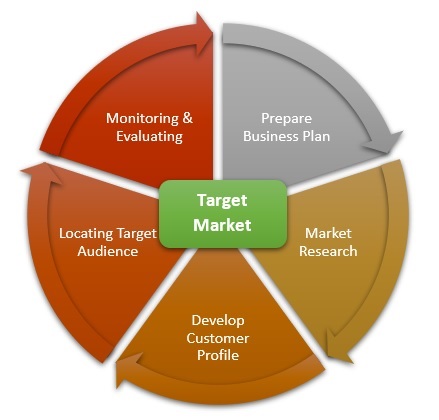We’ve all heard business owners who say, they target “anyone interested in our products and services.” and many of us have also seen small businesses that try to be all things to all people. But before we dig in, here’s a hint; your target market is not ‘everyone’ (unless you are Google)! Because in essence, if you are targeting everyone, you are actually targeting no one.
Targeting a specific market does not mean that you are excluding people who do not fit your criteria. Rather, having a target market allows you to focus your marketing spend and brand message on a specific market that is more likely to buy from you than other markets. This means that you have to be clever in creating products and services and targeting your offers for a specific well-defined group of people. By targeting consumers who are highly likely to have a use and an interest in your brand, product, or service, you are more likely to see a higher return on investment (ROI) in comparison to targeting everyone.
Targeting is simply defining who your primary customer will be. A target market is a broad term used to describe the people who will use your product or service (the end user) and your target audience are the people who will actually purchase your product or service and, in some cases, also the end user.
For example, if you sell children’s shoes the product itself is aimed at the children but, of course, they aren’t going to be the ones making the actual purchase. In this circumstance, the advertising and marketing efforts should be directed at the target audience, which is made up of the parents and guardians making the actual purchase.
Identifying your target market and audience
In order to identify your target market there are a number of things you need to do. Firstly, you need to identify your product or service’s features and benefits. While features are valuable and can certainly enhance your product or service, benefits are what actually motivate people to buy. Once you have your benefits listed, start to make a list of the kind of people who have a need or a desire that your benefit fulfils.
Once you have done this, the next step is to break down the target market into smaller segments with specific characteristics. This is called market segmentation. Segmentation will help you define your target audience and enable you to customise a product/service or other parts of the marketing mix, such as advertising, to reach and meet the specific needs of a a defined customer group.
The target market can be segmented using four types of segmentation- geographic, demographic, psychographic and behavioural. You must then decide which type or types are right and relevant for your business based on your goals. There’s no point for instance delving into demographic segmentation if the age or income of your audience is irrelevant. For example, if you are a caterer you might decide to target the high end of the market, using demographic and geographic segmentation, you can then break this down further by focusing on urban professionals with a monthly income of at least 25K a month living in affluent areas of Accra.
After identifying and defining the possible segments and audiences within your target market, you must face the critical question of whether it would be profitable and feasible for you to pursue each identified segment. To make this decision, you must ask yourself a number of questions and consider a number of things:
- Are there enough people who fit my criteria?
- Do I understand what drives my target to make decisions?
- Will my target really benefit from my product/service? Will they see a need for it?
- Can they afford my product/service?
- Can I reach them with my message? Are they easily accessible?
Now think about all the characteristics you have identified and start to paint a picture or description of your ideal customer; formulate the promotional campaign/message that will best address this specific target segment. Make sure everything you do, from design, price to marketing, addresses your market.
Defining your target market is the hard part. Once you know who you are targeting, it is much easier to figure out how to reach them and what marketing messages will resonate with them. For instance, instead of sending mail to everyone in your email list, you can send it only to those who fit your criteria. Save money and get a better return on investment by defining your target market and audience.
>>>The writer is a Business Consultant with over 15 years of experience in commercial strategy and management who works with entrepreneurs and MSMEs to articulate their value proposition and explore innovative ways to launch and redefine their businesses to drive sustained growth, value and profits. Contact Tina: +233 555 739 664 / [email protected]










